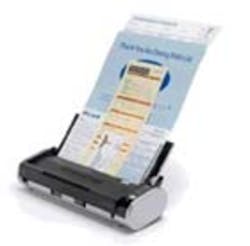That led me to contemplate several questions about the importance of prior paper records to the success of the EHR/EMR. If similar to radiology’s digitization of film, there are probably some parallels and lessons learned.
Logistics and Work Flow
First there is the question of logistics, and the impact on the work flow of healthcare practices. In the early days of Picture Archiving and Communications Systems (PACS), a number of companies sprung up that were hoping to make a living on the digitization of prior films (Raytel, for example). Part of the PACS justification was predicated on the digitization of prior exams. Several of these companies had centralized digitization locations that processed pallet-loads of film shipped from the hospital. Part of the PACS cost was offset by the reclamation of the silver in the film. There were two models of operation: (1) mass digitization of folders; and (2) digitization on demand. Usually, the mass digitization resulted in optical disc storage, with the discs sent back to the hospital. In the on-demand model, films were stored by the company for a fixed period of time, and only those required for comparison studies were digitized and sent back via teleradiology to be viewed electronically on the PACS.
My assumption is that companies vying for similar services for medical records will propose similar options. Part of the Wall Street Journal article’s position is that there is reluctance to send such records out of the country to off-shore digitization services. The fear is that these services may not abide by the same security policies as U.S based companies.
As with film, the physical media may need to be preserved for the normal retention period in case it is necessary to access it again. In other words, there were lingering legal and medical reasons why one might still request the original film, even though the electronic facsimile was readily available. So, for medical records, does this mean that the original documents might need to be warehoused as well? And, if so, will the security of storage be as secure as state-side? What of their eventual disposition? Can providers be assured that such documents were properly disposed of?
Economics played a key role in the handling of prior films. Many sites chose to simply preserve the prior film and let it age out of the system based on retention rules. When required for comparison purposes, sites simply digitize on demand, but still keep the films. Alternatively, they may digitize the entire jacket and reclaim the film when there is a request for the jacket. In either event, file room clerical labor is typically utilized to perform such services. The argument for the off-site digitization services has always been predicated on economies-of-scale in the sense that a dedicated service could perform the service more economically, thereby enabling the facility to reduce labor and capital costs. It is assumed that Outsourcers will make similar arguments for medical records, along with the promise of cheaper labor.
Acceptance
The premise is that similar to radiology, for EHR/EMR’s to work effectively, users will need access to prior records along with newly acquired electronic ones. Physician acceptance will be considerably greater if both current and prior records can be electronically accessed.
One challenge for the outsourcers will be the ability to make such records available in a timely manner. With radiology, this is more manageable, in that it is routine for a radiologist to request prior exams and delay reading the study until they are available for comparison. This may be a more critical factor for medical records, in that there are likely to be more circumstances for on-demand access to prior records where the clinician does not want to wait to access them, such as when the patient is present.
The quality of records will be another important factor in their acceptance. Film digitization services needed to employ reasonably skilled workers for the digitization process so that films were in the correct orientation. Another challenge will be whether the onus is on the digitization service or the clinician to orient records. I don’t expect too many clinicians will be happy if they need to flip and rotate a lab report each time they want to view it. Hence the need for skilled labor for the digitization process.
I am sure there are many other factors that can affect the economics and acceptance of prior medical records interaction with the EHR/EMR. I just hope that facilities considering the rapid assimilation of EHR/EMR technology as part of ARRA/Meaningful use will carefully consider the approach to prior paper records, as it can greatly impact the quality of care.



